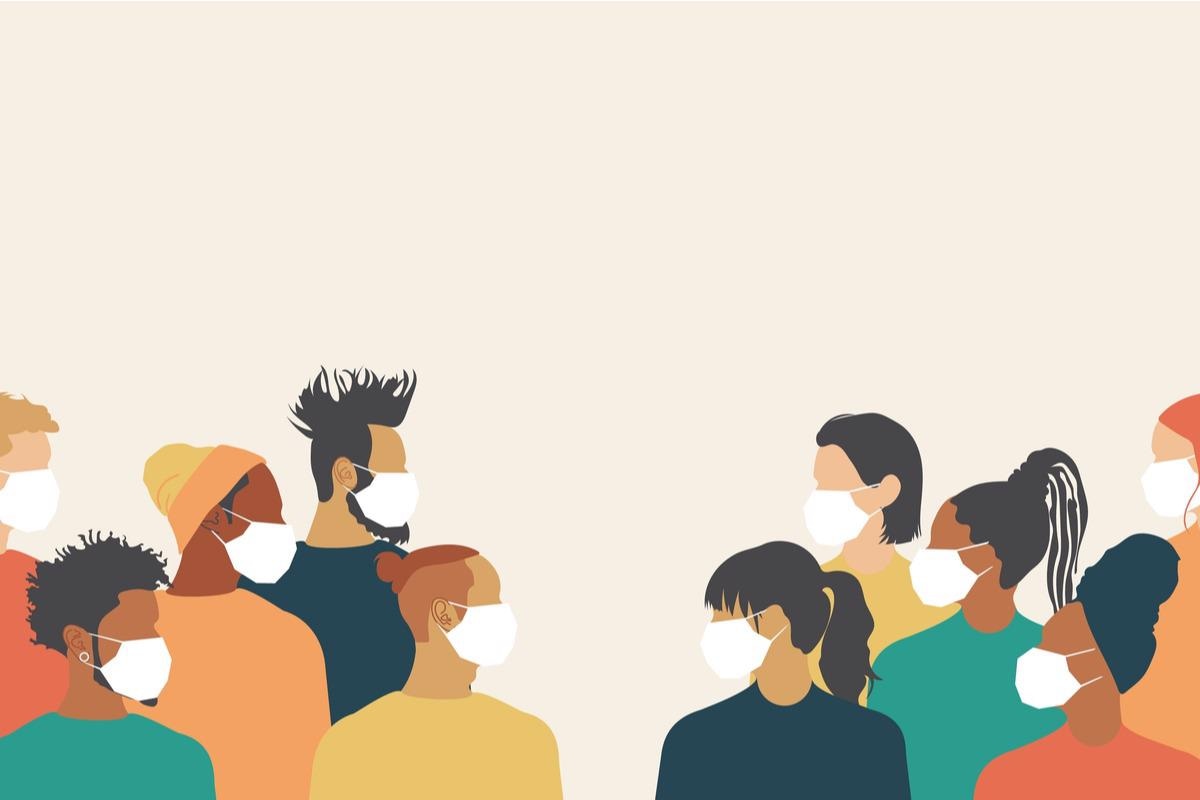Home » Health News »
Effects of social class, ethnicity, and gender on burden of COVID-19 mortality
New research examines the joint effects of social class, race or ethnicity, and gender on the burden of coronavirus disease 2019 (COVID-19) mortality.
 Study: Social Class, Race/Ethnicity, and COVID-19 Mortality Among Working Age Adults in the United States. Image Credit: Sagittarius_13/Shutterstock
Study: Social Class, Race/Ethnicity, and COVID-19 Mortality Among Working Age Adults in the United States. Image Credit: Sagittarius_13/Shutterstock
The researchers in the study determined if opportunities for remote work correlated with COVID-19 deaths for sociodemographic groups.
They found that lower socioeconomic position, working Hispanic males were afflicted more with COVID-19 deaths.
This study’s most urgent implications highlight immediate actions to protect blue-collar, service, and retail sales workers from infection with severe acute respiratory syndrome coronavirus 2 (SARS-CoV-2 virus).
The study is currently available on the medRxiv* preprint server while awaiting peer review.
Background
Since December 2019, COVID-19 caused by SARS-CoV-2 has claimed over 5.18 million deaths globally.
The infection is easily transmitted, indicating that social environments play a vital role in the viral spread and subsequent morbidity and mortality
Social class privilege creates deployment of strategies to avoid, reduce or prevent exposure to SARS-CoV-2. Key things here are the privileges to live in larger homes with few people, in a less densely populated neighborhood, not using public transportation, access to high-quality healthcare, better working conditions, etc. All of which mitigate the viral transmission.
While reports on the substantial racial/ethnic disparities in COVID-19 mortality are documented, the social class disparities and COVID-19 mortality among working-age adults have not yet been studied.
The key question raised in the present study is:
Did COVID-19 mortality rates among non-elderly adults vary significantly by social class, race/ethnicity, and gender in 2020?”
Study findings
The researchers reported that this study is the first national investigation of social class disparities in the working-age adult COVID-19 mortality. Taking advantage of death certificate tabulation released by the U.S. National Center for Health Statistics (NCHS) in February 2021, the researchers calculated age-adjusted COVID-19 mortality rates stratified simultaneously by social class, race/ethnicity, and gender.
The researchers included six racial/ethnic groups: whites, Hispanics, Blacks, Asians, Indigenous (American Indians, Alaska Natives, Native Hawaiians, and other Pacific Islanders), and multi-race. The Indigenous kind was grouped because of small numbers of deaths in some age-social class strata.
The target population in this study included adults aged 25 to 64 years who were U.S. residents during 2020.
Using educational attainment as a proxy of social class, the researchers defined working-class – no college, some college – including associate’s and other 2-year degrees, and college graduate -bachelor’s degree and higher.
Thus, in this study, the researchers analyzed the provisional death counts for 2020 classified by four sociodemographic variables:
1) educational attainment as described above;
2) race and ethnicity;
3) gender (male, female, unknown);
and 4) age group (25-39 years, 40-54 years, 55-64 years).
To calculate the population denominators stratified by these variables, they used the 2020 Annual Social and Economic Supplement (ASEC) to the Current Population Survey (CPS). The final analytic dataset included 69,001 COVID-19 involved deaths among adults aged 25 to 64 years old during the calendar year 2020.
Constructing a social class population pyramid for each of the gender-race/ethnicity groups, the researchers showed that the Hispanics, Black, and Indigenous men were predominantly working class. 68 % of the COVID-19 decedents were working class. Only 12% comprised of college students.
The study showed that the age-adjusted COVID-19 deaths rates were five times higher in the working class vs. college graduate adults aged 25-64 years old. While women had lower COVID-19 death rates than men, the number of deaths was highest for working-class men.
Looking at the social class and COVID-19 mortality by race and Hispanic ethnicity, the researchers observed that the death rates were highest for Indigenous, Hispanic, and Black adults and lowest for multiracial, Asian, and white adults.
However, although Hispanic and Black women experienced lower death rates than Hispanic and Black men, respectively, they suffered higher death rates than the white men across social classes.
On the low-level jobs and ‘never remote’ work by social class, gender, and race/ethnicity, most working-class adults (mostly non-white men) were employed in the lowest-level jobs (blue-collar, service, and retail sales).
The results in the study found the most commonly affected were the working-class adults, with physical, chemical, and biological hazards at their worksites.
Conclusion
Based on the findings from this study, there is a call for the need to protect the working class, i.e., those without a college education, from the SARS-CoV-2 virus.
Working-class Hispanic, Black, and Indigenous men suffered the highest burden of COVID-19 mortality, while college graduate white women experienced the lowest death rate.
The researchers concluded that expert recommendations include strengthening federal and state labor laws, empowering Occupational Safety and Health Administration (OSHA), adopting the Total Worker Health Framework, and direct actions for unions to organize for greater protections for worker safety.
*Important notice
medRxiv publishes preliminary scientific reports that are not peer-reviewed and, therefore, should not be regarded as conclusive, guide clinical practice/health-related behavior, or treated as established information.
-
Pathak, E. et al. (2021) "Social Class, Race/Ethnicity, and COVID-19 Mortality Among Working Age Adults in the United States". medRxiv. doi: 10.1101/2021.11.23.21266759 https://www.medrxiv.org/content/10.1101/2021.11.23.21266759v1
Posted in: Medical Science News | Medical Research News | Disease/Infection News
Tags: Coronavirus, Coronavirus Disease COVID-19, Education, Healthcare, Labor, Mortality, Research, Respiratory, SARS, SARS-CoV-2, Severe Acute Respiratory, Severe Acute Respiratory Syndrome, students, Syndrome, Virus

Written by
Dr. Ramya Dwivedi
Ramya has a Ph.D. in Biotechnology from the National Chemical Laboratories (CSIR-NCL), in Pune. Her work consisted of functionalizing nanoparticles with different molecules of biological interest, studying the reaction system and establishing useful applications.
Source: Read Full Article


